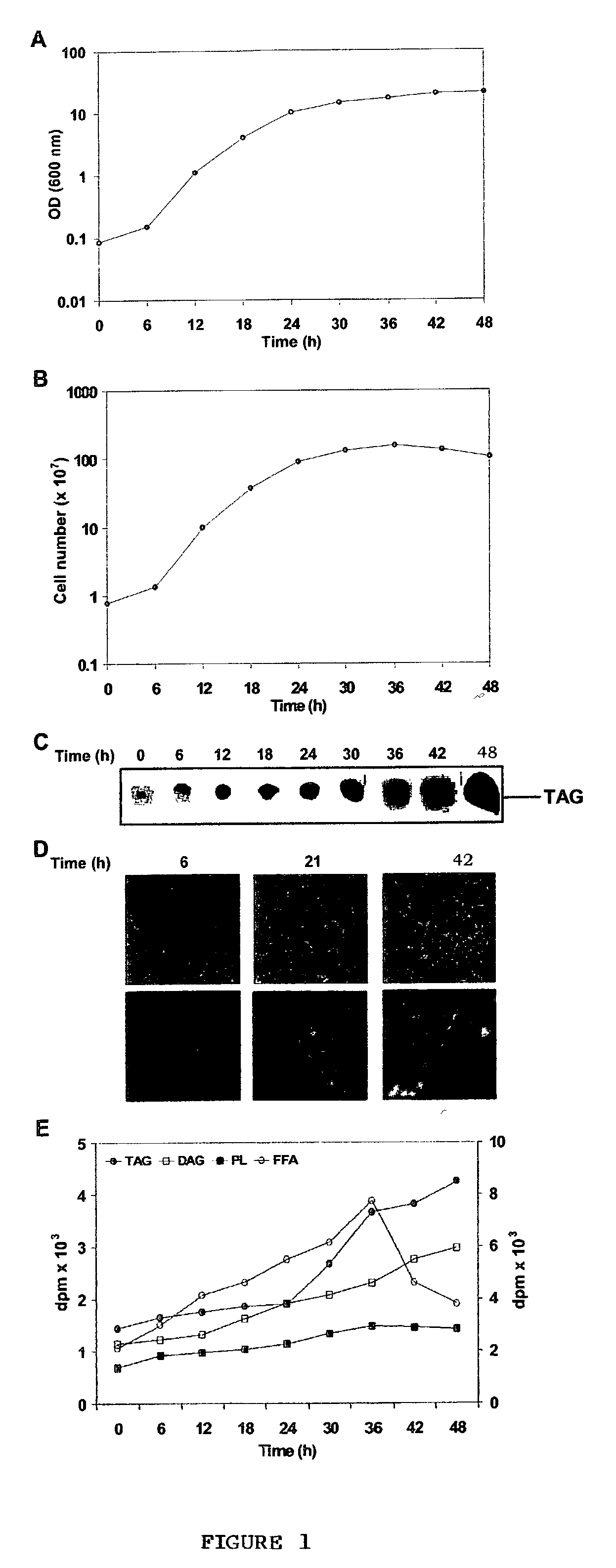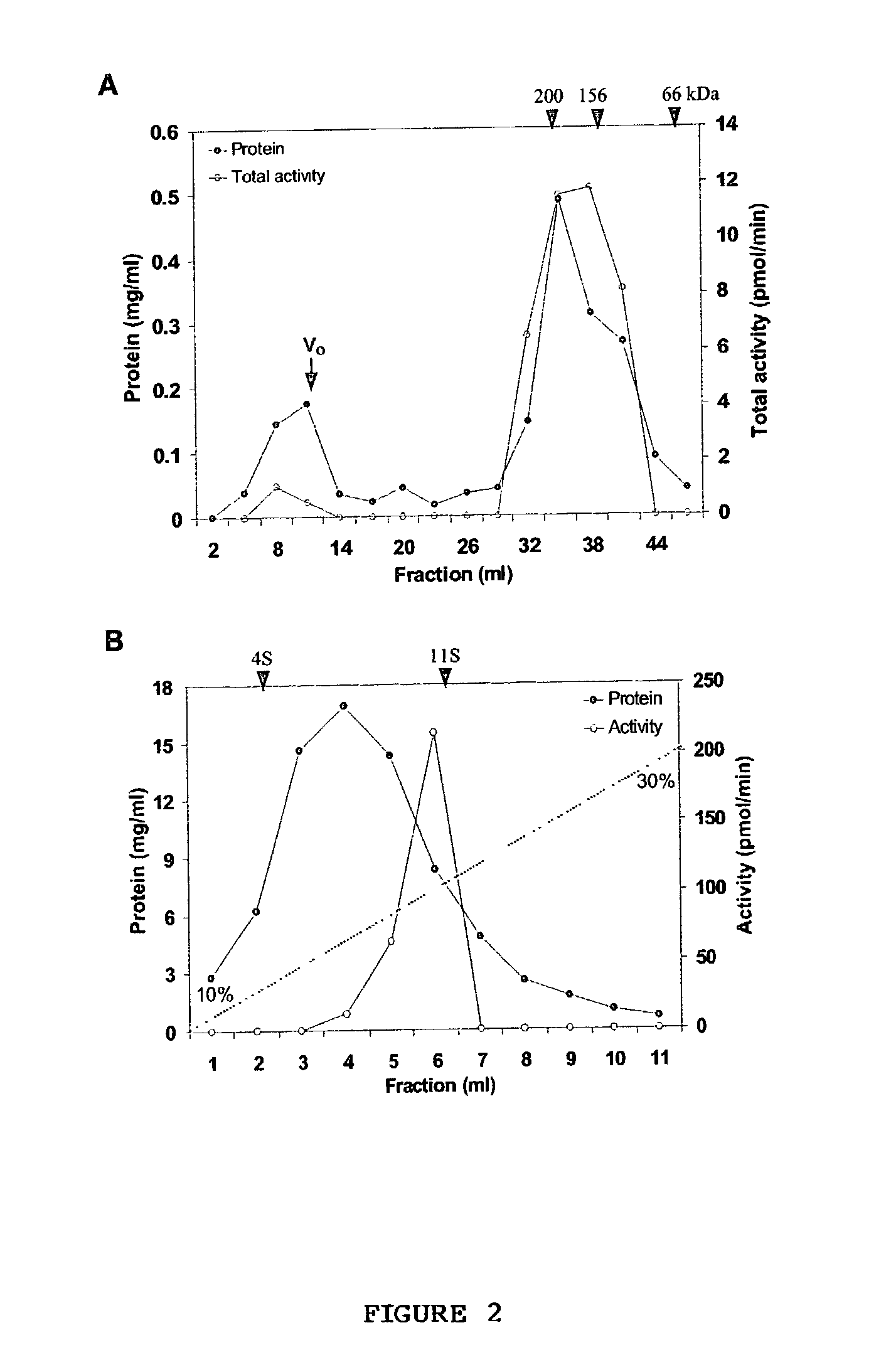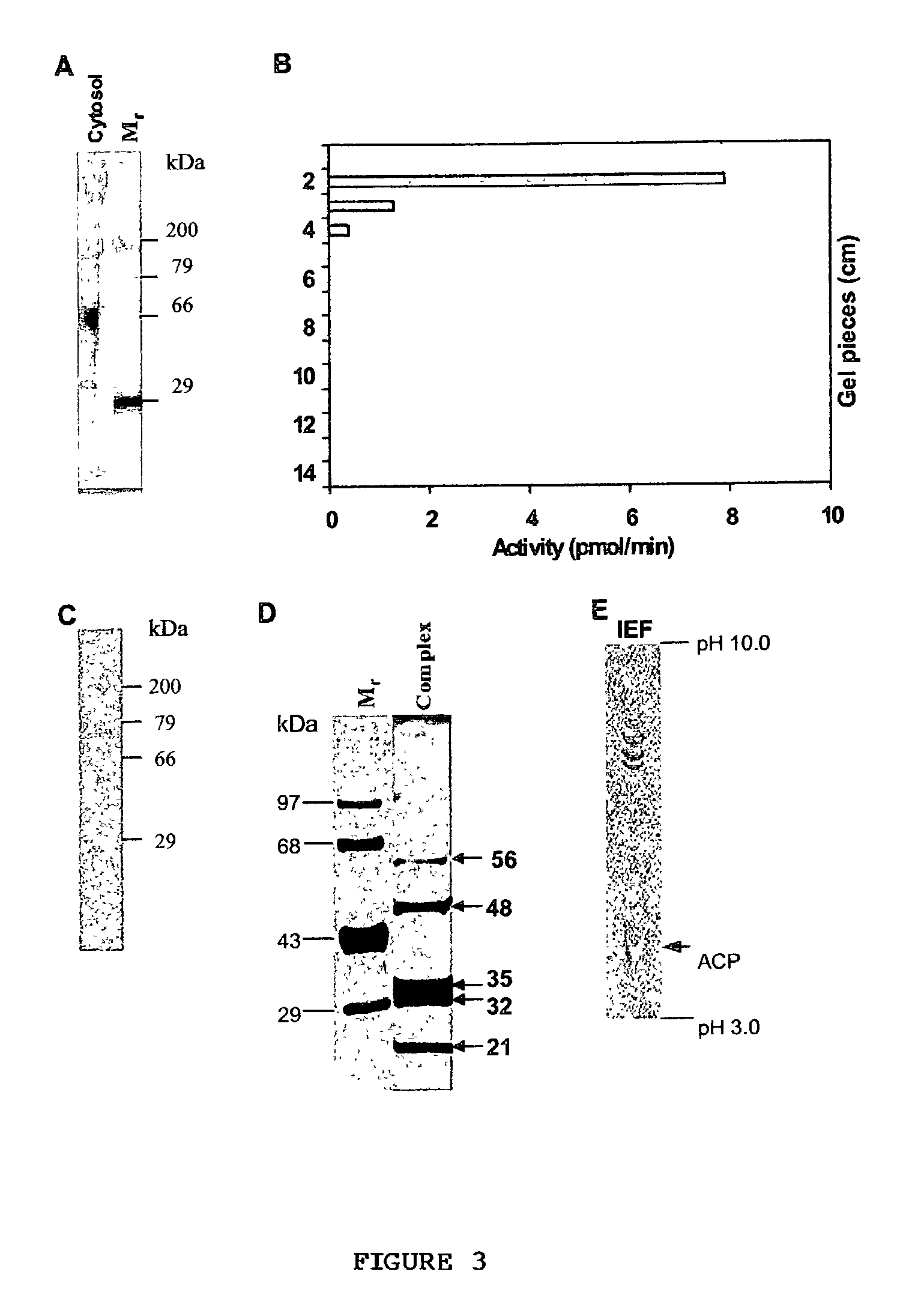Novel triacylgl ycerol biosynthesis in the cytosol of eukaryotes
a technology of eukaryotes and triacylglycerides, which is applied in the direction of recombinant dna-technology, transferases, botany apparatuses and processes, etc., can solve the problem of absence of this biosynthesis pathway in the cytosol, and achieve the effects of reducing the deposition of fat cells, inhibiting diacylglyceride acyltransferase, and reducing the amount of triglycerid
- Summary
- Abstract
- Description
- Claims
- Application Information
AI Technical Summary
Benefits of technology
Problems solved by technology
Method used
Image
Examples
example ii
[0082] Identification of soluble TAG biosynthetic activity--The TAG synthase activity in the cytosol could be due to the presence of non-sedimentable cellular membrane fragments and lipid particles generated during isolation procedures. To demonstrate that the soluble fraction had TAG biosynthetic activity, which was loaded onto a gel exclusion column (Superose 12). TAG synthase activity (12-15%) was also found in the wide-volume fraction and this activity could be due the to the lipid particles. Most of the TAG synthase activity was eluted between 158 to 200 kDa gel filtration molecular weight standards (FIG. 2A). This experiment demonstrated that the TAG biosynthetic activity is soluble.
example iii
[0083] Purification of TAG synthase--TAG biosynthetic activity was found high in the soluble fraction and this fraction was loaded onto a 7% native-polyacrylamide gel electrophoresis (PAGE) and the run was carried out at 4.degree. C. To determine which region of the gel corresponds to TAG synthase, the eluted proteins were assayed for activity. LPA acyltransferase, PA phosphatase and DAG acyltransferase were detected in the same region of the gel (FIG. 3A). To identify the number of bands present in the active gel eluted fraction, the same was reloaded onto a native gel and a single band was visualized upon silver staining (FIG. 3B). Overall summary of the purification procedure is shown in Table II. Native-PAGE step was effective and resulted in 469, 426-, and 409-fold purification for LPA acyltransferase, PA phosphatase and DAG acyltransferase, respectively, with the recovery of 39 to 56%. The ratio of acyltransferases to PA phosphatase activity remained constant during purificati...
example iv
[0084] Identification of a 110S multienzyme complex--To examine if the enzymes were present as a multifunctional protein or multienzyme complex. Gel eluted active fraction containing TAG synthase were resolved under denaturing and reducing conditions on a polyacrylamide gel that showed five polypeptides upon silver staining (FIG. 3D). The purified complex was subjected to isoelectric focussing (IEF) followed by silver staining and the profile showed the presence of five polypeptides, of which four were basic (pI>8.0) and one was acidic (pI 4.0) proteins (FIG. 3E). The sedimentation value of the purified complex was estimated by loading the native polyacrylamide gel eluted active fraction onto a 10-30% linear sucrose gradient and the various fractions were analyzed for TAG synthase activity. The analysis revealed that LPA acyltransferase, PA phosphatase and DAG acyltransferase activities were associated with one fraction. The sedimentation value of the active fraction was calculated ...
PUM
| Property | Measurement | Unit |
|---|---|---|
| Volume | aaaaa | aaaaa |
| Mass | aaaaa | aaaaa |
| Mass | aaaaa | aaaaa |
Abstract
Description
Claims
Application Information
 Login to View More
Login to View More - R&D
- Intellectual Property
- Life Sciences
- Materials
- Tech Scout
- Unparalleled Data Quality
- Higher Quality Content
- 60% Fewer Hallucinations
Browse by: Latest US Patents, China's latest patents, Technical Efficacy Thesaurus, Application Domain, Technology Topic, Popular Technical Reports.
© 2025 PatSnap. All rights reserved.Legal|Privacy policy|Modern Slavery Act Transparency Statement|Sitemap|About US| Contact US: help@patsnap.com



